This pub is closed permanently. Your nearest Wetherspoon pub: The Sovereign of the Seas
The famous writer George Orwell described his ideal pub in a newspaper article. He called his fictional pub ‘Moon Under Water’ which is why ‘moon’ is used in the name of several Wetherspoon pubs. This pub is at the front of the Walnuts shopping centre, built in the 1970s and named after the Victorian house which had stood here, the long-time home of Mrs Vinson, whose family were large-scale growers of soft fruit.
.
A print and text about the Priory.
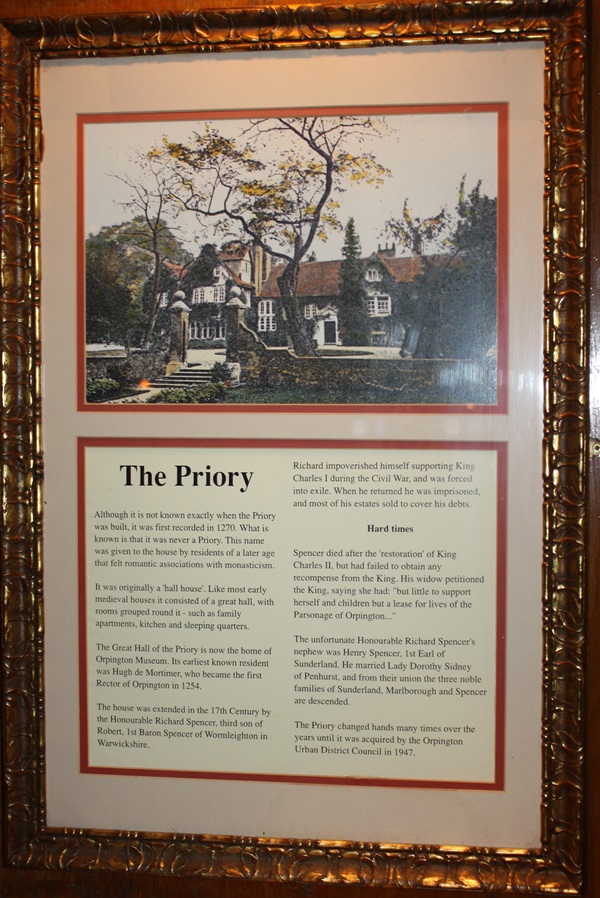
The text reads: Although it is not known exactly when the Priory was built, it was first recorded in 1270. What is known that it was never a Priory. This name was given to the house by residents of a later age that felt romantic associations with monasticism.
It was originally a ‘hall house’. Like most early medieval houses it consisted of a great hall, with rooms grouped round it- such as family apartments, kitchen and sleeping quarters.
The Great Hall of the Priory is now the home of Orpington Museum. Its earliest known resident was Hugh de Mortimer, who became the first Rector of Orpington in 1254.
The house was extended in the 17th century by the Honourable Richard Spencer, third son of Robert, 1st Baron Spencer of Wormleighton in Warwickshire.
Richard impoverished himself supporting King Charles I during the Civil War, and was forced into exile. When he returned he was imprisoned, and most of his estates sold to cover his debts.
Spencer died after the ‘restoration’ of King Charles II, but had failed to obtain any recompense from the King. His widow petitioned the King, saying she had: “but little to support herself and children but a lease for lives of the Parsonage of Orpington…”
The unfortunate Honourable Richard Spencer’s nephew was Henry Spencer, 1st Earl of Sunderland. He married Lady Dorothy Sidney of Penhurst, and from their union the three noble families of Sunderland, Marlborough and Spencer are descended.
The Priory changed hands many times over the years until it was acquired by Orpington Urban District Council in 1947.
Prints and text about William Cook, Frank Smith and Jack Milroy.
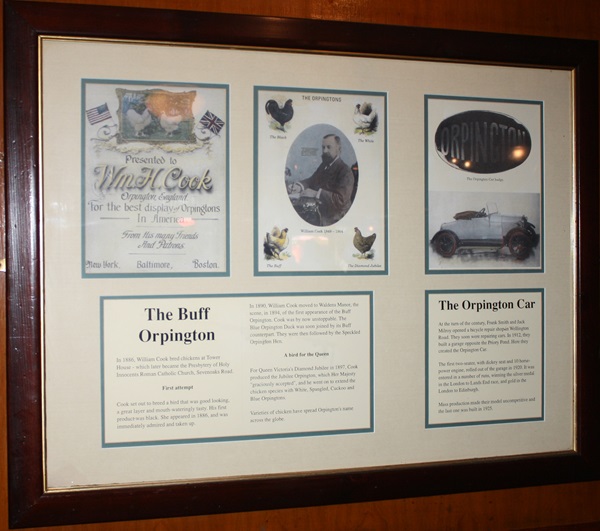
The text reads: The Buff Orpington
In 1886, William Cook bred chickens at Tower House - which later became the Presbytery of Holy Innocents Roman Catholic Church, Sevenoaks Road.
Cook set out to breed a bird that was good looking, a great layer and mouth-wateringly tasty. His first product was black. She appeared in 1886, and was immediately admired and taken up.
In 1890, William Cook moved to Waldens Manor, the scene, in 1894, of the first appearance of the Buff Orpington. Cook was by now unstoppable. The Blue Orpington Duck was soon joined by its Buff counterpart. They were then followed by the Speckled Orpington Hen.
For Queen Victoria’s Diamond Jubilee in 1897, Cook produced the Jubilee Orpington, which Her Majesty “graciously accepted” and he went on to extend the chicken species with White, Spangled, Cuckoo and Blue Orpingtons.
Varieties of chicken have spread Orpington’s name across the globe.
Orpington Car
At the turn of the century, Frank Smith and Jack Milroy opened a bicycle repair shop in Wellington Road. They soon were repairing cars. In 1912, they built a garage opposite Priory Road. Here they created the Orpington Car.
The first two-seater, with dickey seat and 10 horse-power engine, rolled out of the garage in 1920. It was entered in a number of runs, winning the silver medal in the London to Lands End Race, and gold in the London to Edinburgh.
Mass production made their model uncompetitive and the last one was built in 1925.
Illustrations and text about the church and churchyard.
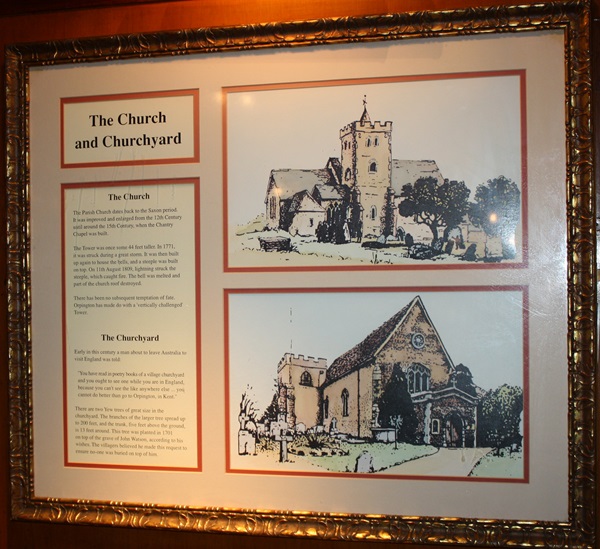
The text reads: The Church
The Parish Church dates back to the Saxon period. It was improved and enlarged from the 12th century until around the 15th century, where the Chantry Chapel was built.
The Tower was once some 44 feet taller. In 1771, it was struck during a great storm. It was then built up again to house the bells, and a steeple was built on top. On 11th August 1809, lightning struck the steeple, which caught fire. The bell was melted and part of the church roof destroyed.
There has been no subsequent temptation of fate. Orpington has made do with a ‘vertically challenged Tower’.
The Churchyard
Early in this century a man about to leave Australia to visit England was told:
“You have read in poetry books of a village churchyard and you ought to see one while you are in England, because you can’t see the like anywhere else… you cannot do better than going to Orpington, in Kent.”
There are two Yew trees of great size in the churchyard. The branches of the larger tree spread up to 200 feet, and the trunk, five feet above the ground, is 13 feet around. This tree was planted in 1701 on top of the grave of John Watson, according to his wishes. The villagers believed he made this request to ensure no-one was buried on top of him.
Posters for The Palace, Orpington.
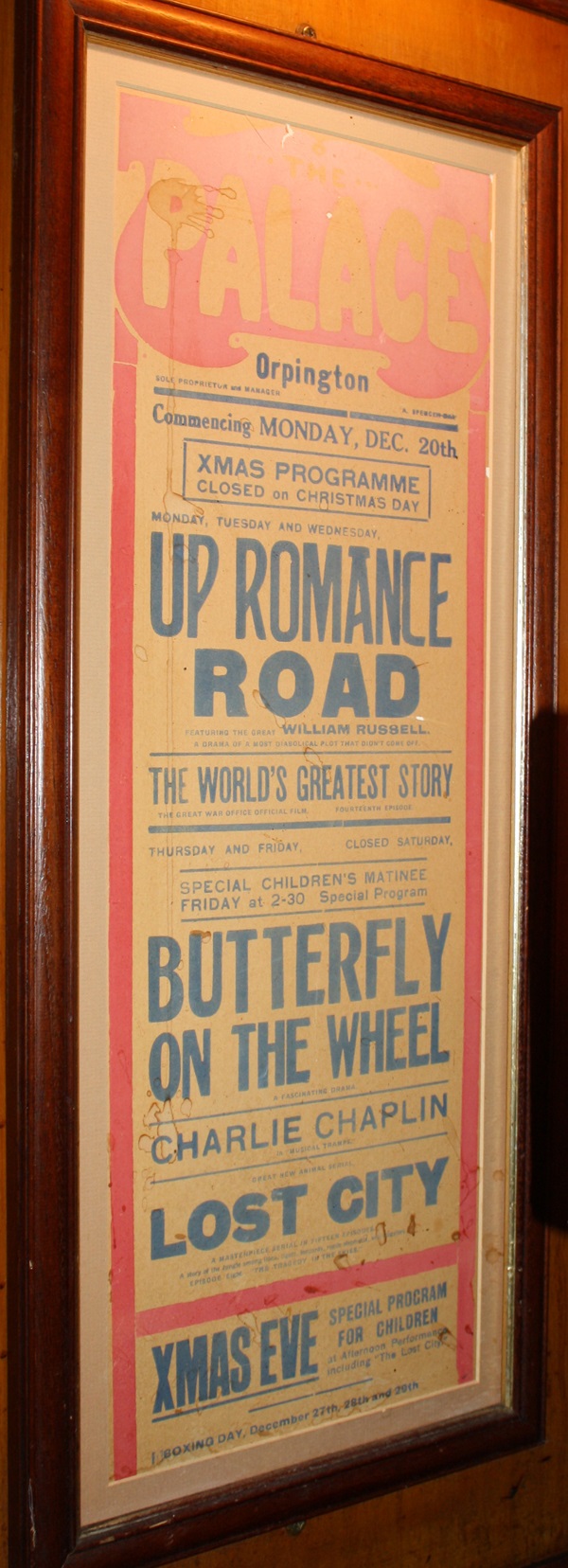
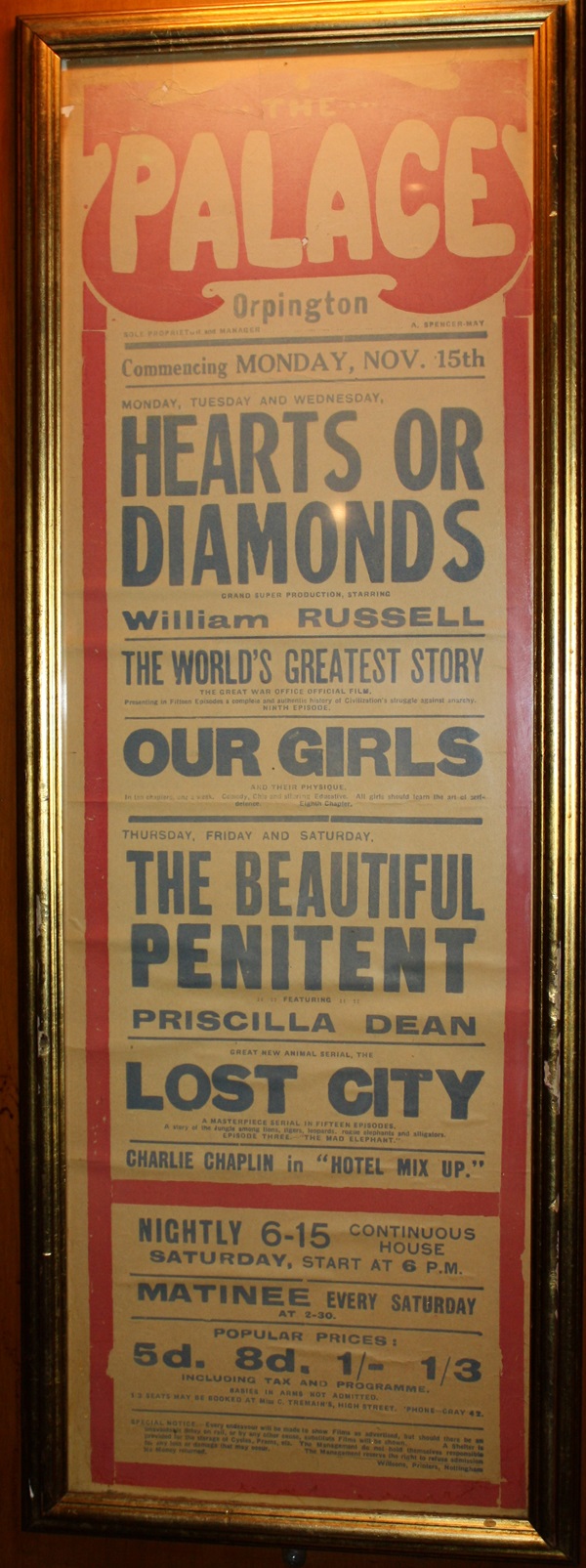
Prints of St. Mary Cray c1906.
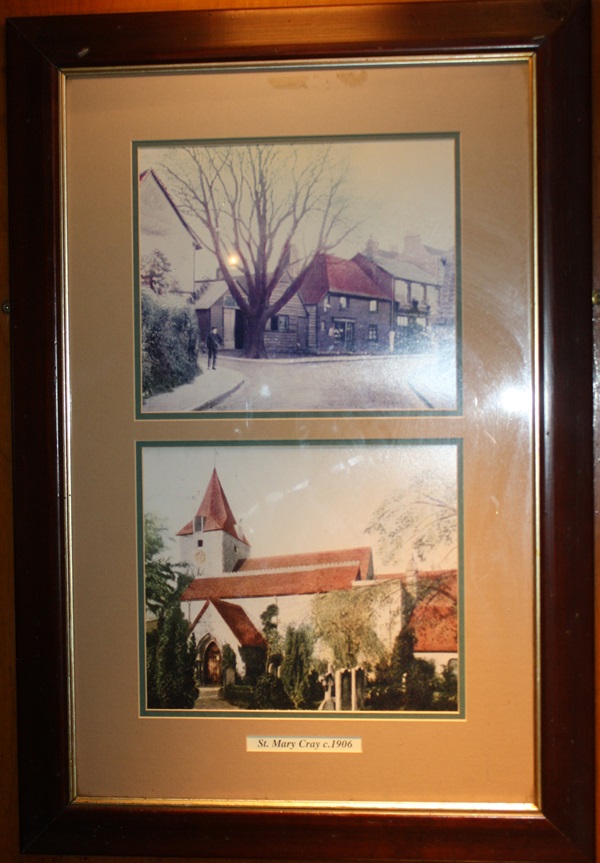
A photograph of High Street, Orpington c1905.
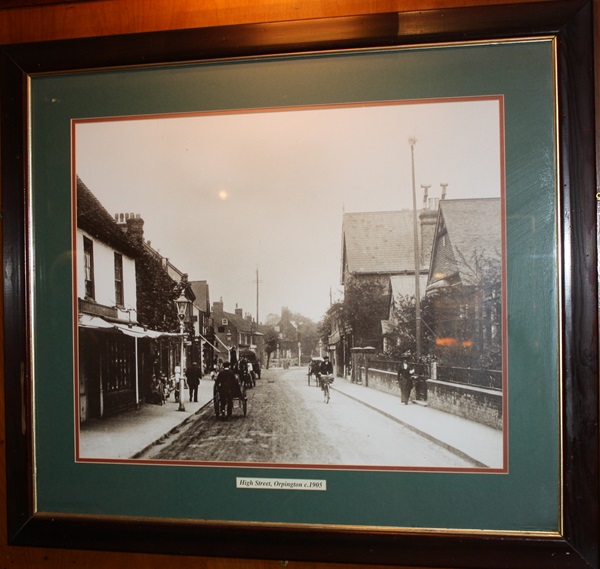
External photograph of the building – main entrance.
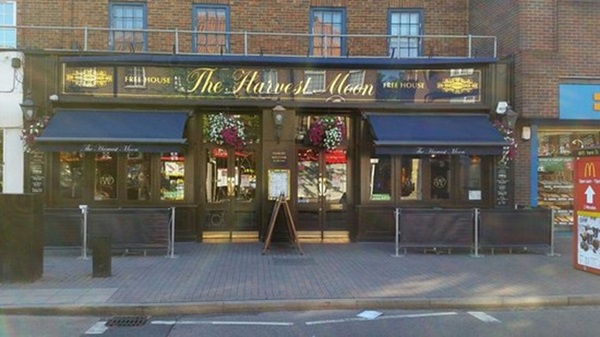
If you have information on the history of this pub, then we’d like you to share it with us. Please e-mail all information to: pubhistories@jdwetherspoon.co.uk